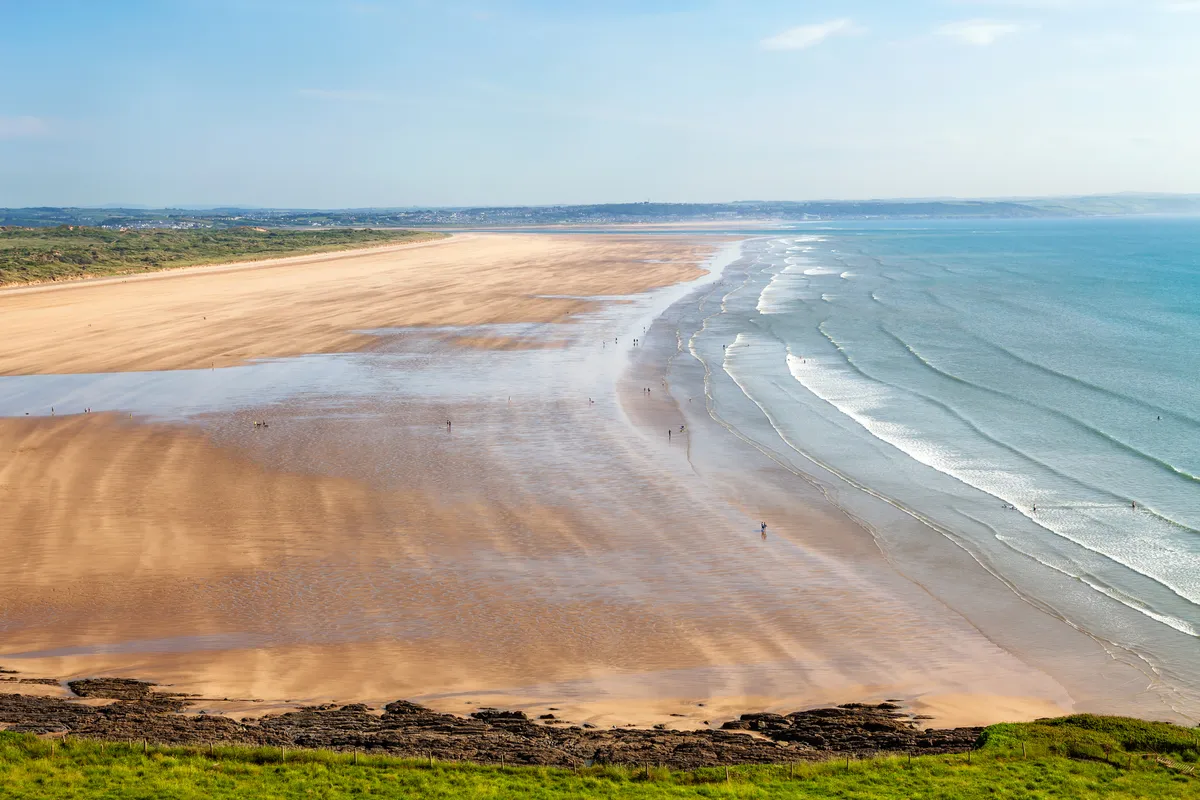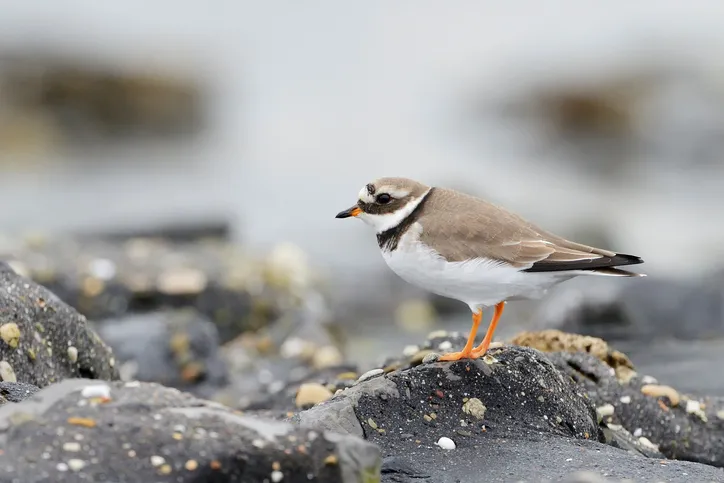Spring sees this golden expanse of rolling sand dunes on the North Devon coast bustle with bunnies, butterflies, migrant warblers, and lizards slithering around scattered morels and sprouting orchids.
Stretching across 899 hectares – between Saunton Sands beach and the pretty village of Braunton – this breathtaking sand dune system is the second largest in England (narrowly beaten by Sefton Coast in Merseyside). Its unique habitat provides a home for a rich and diverse community of highly specialised plants and animal species, especially in spring, along with military debris from the Burrows’ role as a training ground for the US Army during the Second World War.
The reserve is a paradise to explore at any time, when all you can hear is the muffled crashing of waves, and sea breezes carving through the dunes.

Amber Sandbowl Snail
Classified as Near Threatened on the IUCN Red List, the pretty amber sandbowl snail is an extremely rare snail with an amber-coloured shell that dwells in the wet dune slacks. As a treasured species – they occur in only one other site in the UK – the snail is today benefiting from an effort to conserve it by increasing both the level of the water table and grazing to produce the sparsely vegetated, bare earth habitat favoured by the snail.
Lichens
The short, heavily grazed vegetation throughout the Burrows is home to a variety of lichen, including the aptly named sausage lichen (Usnea articulata) and scrambled-egg lichen (Fulgensia fulgens). Strings of grey-green sausage lichen hang from scrub and branches of creeping willow, while the more familiar egg-yellow rosettes of scrambled-egg lichen are found in the open, south-facing areas of the dunes.
Related articles
Water Germander
Found in the dune slacks of the reserve (areas of wetland formed in depressions between sand dunes) water germander (Teucrium scordium) is a rare indigenous perennial plant only found at one other site in the UK – a flooded limestone quarry in Cambridgeshire. Similar in appearance to mint, its pinkish-purple flowers come to life from June to October, and when crushed, its leaves give off a strong smell of garlic.
Ringed Plover
The ringed plover, a small, dumpy, short-legged wading bird, is a regular sight here in early spring. Sadly these characterful waders seem blissfully unaware of the vast tidal range meaning many of their nests are washed away at rising tide. A safe breeding site has been set up at Crow Point on the Taw estuary, the most southerly point of the Burrows, to help the species during nesting season.

St Hannahs
According to local legend, a settlement, which went by the name of St Hannahs and featured a place of worship known as the Chapel in the Sands, once existed at the south end of the Burrows. Up until 1860 the chapel’s ruins could apparently be seen – it’s clearly marked on both Donn’s 1765 map and an 1809 Ordnance Survey map – but today its location is very much a mystery. The shifting sands do nothing to help the situation, although numerous attempts have been made to find it over the years.
Rabbits

Braunton Burrows derives its name from the hundreds of common rabbits that make the area their home – even the shortest walk will pass a number of rabbit holes. Despite a need to keep a watch over their rising population (rabbit counts take place at night), the rabbits are an invaluable asset to the Burrows as their grazing ensures the grassland is kept closely cropped. This provides ideal habitat for a range of plants and animals.
Useful Information
HOW TO GET THERE
Follow the A361 from Barnstaple to Braunton before taking the B3231 towards Saunton and Croyde. About a mile along the B3231 turn left along Burrows Close Lane, following signs to Braunton Burrows (1.5 miles). At the end of the narrow country road you’ll pass through an old metal gate and on your right is a large, pot-holed car park.
FIND OUT MORE
North Devon AONB and Biosphere
01237 423655
www.northdevonbiosphere.org.uk
www.explorebraunton.org
Explore Braunton provide handheld GPS-controlled multimedia devices that give tours of three key locations, including Shifting Sands that covers Braunton Burrows. Available from Braunton Countryside Centre (01271 817171) in Caen Street Car Park.
EAT
Wild Thyme Juice Cafe
Braunton EX33 1EG
01271 815191
www.wildthymecafe.co.uk
Friendly cafe with a laid back vibe that serves great home cooked food, smoothies, juices and Fairtrade organic coffee and tea.
VISIT
Lundy Island
01271 863636
www.landmarktrust.org.uk
Its outline visible on the horizon from Braunton Burrows, this three-mile long granite outcrop is a place of outstanding natural beauty and a haven for nature lovers. Boats operate daily.
